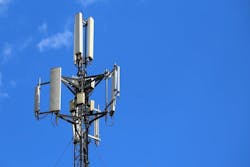How airports are making the case for indoor 5G connectivity
FORT ATKINSON, Wis. - Along with their luggage, today’s connected travelers bring something else with them to the airport—something they don’t even consciously realize they have. That extra something is a conditioned expectation of 5G-level connectivity everywhere they go. While outdoor 5G is pervasive across many urban markets, driven by the macro cellular networks we all use, indoor coverage remains an uncertain proposition in many places—and when that ease of access is lacking, travelers notice, Kevin Swank writes for AviationPros. Continue reading original article.
The Military & Aerospace Electronics take:
11 June 2024 - Kevin Swank is a veteran of the cellular wireless industry – having worked in everything from 2G to 5G and is the NICS product marketing director for CommScope in Claremont, N.C.
Swank writes that "The first 5G deployments had to—and in many places, still have to—share infrastructure with existing 4G/LTE technologies. This co-siting, though required to accommodate users still behind the 5G adoption curve, limited how 5G’s full potential could be realized on a practical level by limiting available spectrum.
"In 2024, however, the market’s adoption of 5G mobile devices is nearing completion and these compromises are becoming moot. A full 5G network’s capacity and speed is exponentially greater than 4G/LTE’s; simply put, 5G does everything the older network technology can do—and do it much better. And it’s a good thing, too—after half a decade getting used to seeing the 5G logo on their devices’ status bars and taking 5G performance for granted in the outdoor macro environment, subscribers—and by that, I mean travelers—now see that 4G/LTE indication as an unwelcome compromise that they are increasingly unhappy to accept. Considering the sheer number of ways these travelers depend on connectivity in their journeys, it’s hardly surprising."
Related: Seamless Air Alliance works to integrate 3GPP 5G satellite networks into aviation sector
Related: Learn about 5G enabling technologies in the military
Jamie Whitney, Senior Editor
Military + Aerospace Electronics
